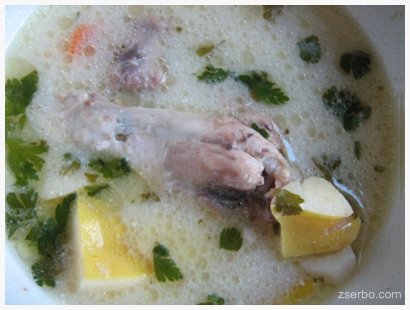I’m sure many Hungarians have a sweet memory of their grandmothers walking around the kitchen table and stretching briskly and routinely a strudel dough until the white table cloth appears under the wafer-thin dough.
Rétes, the Hungarian name of strudel comes from the word réteges, which means layered. Originally strudel used to be made by layering paper-thin sheets of dough with filling, similar to baklava, the Ottoman Empire’s famous dessert. It was baked in rick-shaped oven, dusted with powdered sugar and cut into squares. That pastry was named rétes-béles.
Many labour under the delusion that strudel has a Hungarian origin, but it’s more likely that we took it from the Turks when our country was ruled by the Ottoman Empire. The Turkish origin is also supported by the fact that rétes-béles (layered strudel) was first mentioned in the chronicles of the 15-16th centuries. Strudel roll as we know it today appeared only in the 18th century.
Strudel became reasonably popular in the Austro-Hungarian Empire, Hungarians, Czechs and Austrians ate it with relish, the latter has made a big name for apple strudel that is listed among the world’s 100 most famous dishes. Despite the Austrian fame in the 19th century confectioners from different parts of the world came to Hungary to learn the tricks of making a perfect strudel.
Many are afraid to make a strudel dough; therefore, recipes these days often cheat by using sheets of purchased phyllo dough or puff pastry. However, making a strudel dough from scratch is actually easier than it seems. A soft dough made with only a handful of ingredients that’s hand-stretched into a paper-thin sheet the size of a (large) tabletop.
Hand-stretched strudel is usually baked only for the holidays or special occasions because it’s very time consuming to prepare. The classic sweet fillings are apple, cottage cheese, poppy seeds, walnuts and sour cherries. Those who prefer salty foods can fill rétes with steamed cabbage, potatoes, spinach or meat.
The strudel my family has been baking for decades is based on a recipe that my grandmother learnt from one of her friends who lived in Ásványráró, a small settlement in Győr-Moson-Sopron county. The dough is divided into 7 equal parts that are rolled out into circles and layered with lard.
The amount of the apple and cottage cheese fillings I described supposed to be enough to fill the whole dough, but it depends on how thin you can stretch the dough and how many times you roll the strudel. Therefore, I recommend that you also keep a third kind of filling at hand in case apple and cottage cheese run out and you still have dough to fill.




















2 Comments